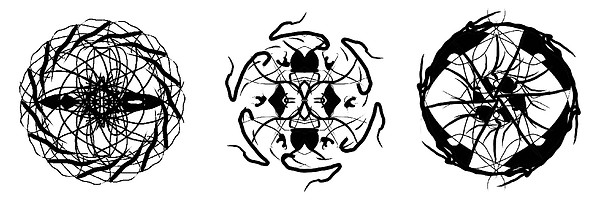Kamon
Honoring the past and fostering the future of Yanaka through cross generational resident connection
Yanaka is one of the few areas of Tokyo that was spared from bombing in WWII. It's Tokyo's most traditional district and is home to artisans, temples, winding lanes and some great restaurants. The Yanaka area is gradually declining. In the face of changing social changes, as a designer, how to drive the development of Yanaka and retain its own characteristics and coexist in a new era.
Observation & Insight


Kamon (Japanese)
Mon, also monshō, mondokoro, and kamon, are Japanese emblems used to decorate and identify an individual, a family, or an institution or business entity. While mon is an encompassing term that may refer to any such device, kamon and mondokoro refer specifically to emblems used to identify a family.
Observation & Insight

Yanaka Ginza
Yanaka Ginza is named such after the famed shopping district in Tokyo’s Chuo Ward, although the similarities stop there. On Yanaka Ginza, there are purportedly around 60 shops that occupy a narrow street where only foot traffic is allowed.
Yanaka Cemetery
Yanaka Cemetery was the largest cemetery in Japan at the time of its forcible creation. I have observed an interesting phenomenon. There is no clear demarcation between Yanaka Cemetery and Residential areas. Residents and Tourists use Yanaka Cemetery as a park to have fun there.


Public Space
Residents use public spaces for their own purposes
such as air conditioner space and furniture space.
Yanaka Community notice Board
Residents of Yanaka use outdoor community notice boards to share news and knowledge.


Yanaka Residents
Yanaka residents make an effort to preserve tradition but also welcome change. Old houses can not support modern lifestyle. There is no urban regeneration plan in Yanaka area which can provide new housing units.
The relationship between residents is close.
Many residents have been living there for a long period, so they share their space and also life. Residents share part of their house for public such as store and food stand

Daienji Temple
Daienji Temple is a couple blocks up the hill on the left, marked with a sign in English and famed for Osen, a tea shop clerk, who was used as a model for the famous ukiyo-e artist Suzuki Harunobu. Also of interest at Daienji is the relief work on the temple eaves: elaborately carved depictions of dragons and other fanciful creatures.
There is a significant generational gap within the residents of Yanaka, with the elderly being the larger generational group and we look to modernize the Yanaka traditional lifestyle to welcome a younger generation of residents. Provide new purposes for the growing number of abandoned traditional buildings in the Yanaka area to would help reinvigorate the Yanaka landscape.
Project Vision
Our proposal provides a new system of shared living which will renew the Yanaka area and also encourages (cross-generational) resident connection.
Prototype

Kamon
The whole town can be your Home
We want to effectively use all the space in the yanaka acommunity and provide more public areas to facilitate the daily life of residents. For example, the new multifunctional community laundry center, includes catering and entertainment, public activities and other functions.
Benefit
A: Renew the public spaces and private houses in Yanaka area but also keep the traditional living style.
B: Create a new image of Yanaka area.
C: Make Yanaka more attractive for new resident.
D: A dynamic neighborhood is more resilient. Connection between younger and older residents is way to ensure a bright Yanaka future.
